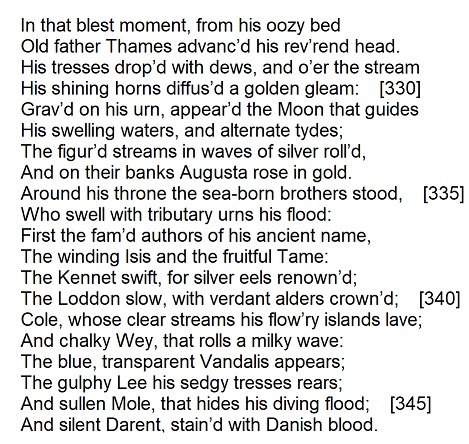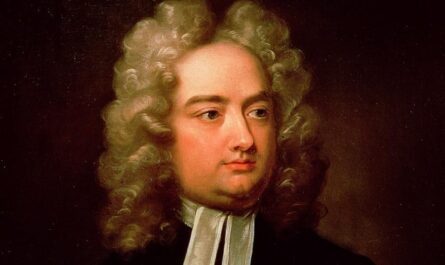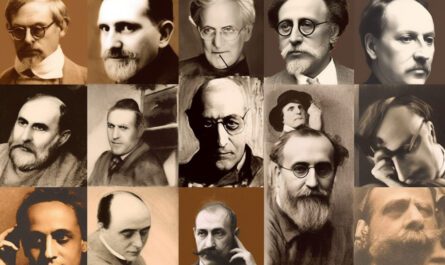This is the first part of a short essay comparing the ways in which natural landscape is described in select excerpts of Alexander Pope’s Windsor Forest and William Wordsworth’s Tintern Abbey.
Natural landscape in Alexander Pope’s Windsor Forest
Windsor Forest by Alexander Pope (an excerpt):

The main source of Pope’s inspiration was Latin and Greek poetry, so no wonder that the classical style is present in his own poems. The language of Windsor Forest is generally grandiloquent, although it suits well the poem’s aim: Pope is trying to evoke admiration and awe in the reader, and the high style helps to achieve this goal. The metric structure of the poem (a fairly strict iambic pentameter) also emphasizes its somewhat pompous tone. The references to ancient Greek and Roman mythologies are countless: there are so many of them that the modern reader, especially one without a university degree, is not always sure what is going on. Fortunately phrases like “Rich Industry sits smiling on the plains,//And peace and plenty tell, a Stuart reigns”[41-42] do help to recall that Windsor Forest is not only a poem about Pope’s tender feelings to a place known to him from childhood, but also a type of government propaganda: it is emphasized in the text several times how much England had suffered before and how beneficial and plentiful the modern age is (the poem was published in 1713). But Pope’s decision to make the poem patriotic (thus, fully deserving the classical style) led to an interesting paradox: its language became so saturated with “high” terms and references to mythology that the reader starts to question the biased view of the author and wonder whether Windsor Forest actually does deserve the praises that are being given to it. Besides, if all mentions of England are taken away from the poem, it will look a lot like a translation of an ancient work.
In the forequoted excerpt Pope develops a personified image of the most prominent English rivers by comparing them to a king (which is Thames: “In that blest moment, from his oozy bed//Old father Thames advanc’d his rev’rend head” [327-328]) and the royal family (“Around his throne the sea-born brothers stood…” [335]). The purpose of this trope is to glorify the natural landscape (seemingly because it had provided adequate scenery for the historically important events that took place on the British Isles). The excerpt is elaborated beautifully: we find mentions of ten rivers apart from Thames (which is described in particular detail): Isis, Tame, Kennet, Loddon, Cole, Wey, Vandalis, Lee, Mole and Darent, and for each one of them a special trait that particular river alone is found: “Loddon slow”, “chalky Wey”, “gulphy Lee”, etc. Line by line, Pope describes them in short phrases (such as “The Kennet swift, for silver eels renown’d” [339]) and does not repeat himself even once, which creates an impressive diversity of different yet equally beautiful images. This can be traced throughout the whole poem: no matter what part of landscape we encounter, Pope always invents a trope that makes it seem glorious or, at the very least, worth mentioning. Nevertheless, the descriptions of the landscape somewhat suffer of this abundance: the language of the poem is so rich in grandeur that the reader finds it problematic to perceive the landscape as natural. Rather, we get the feeling of looking at a décor of an ancient epic. In his intention to create an all-encompassing panoramic view, Pope rushes through the individual elements a little too fast. This is why it is easier to think of the landscape in Windsor Forest in general: we might fail to remember what particular river was renowned “for silver eels”, but the overall impression of having looked at something significant will hold.
The depiction of natural landscape in William Wordsworth’s Tintern Abbey



